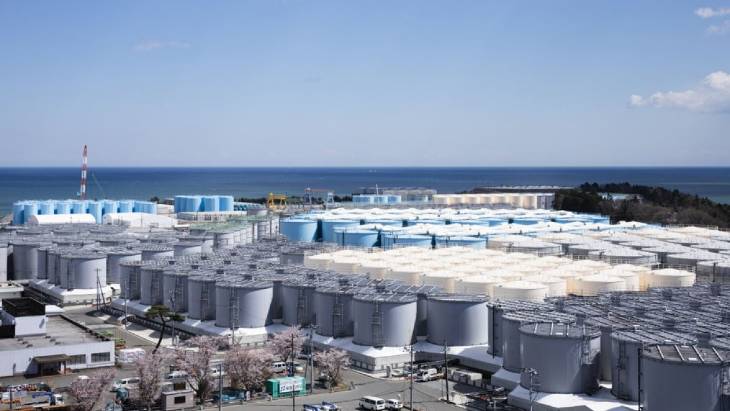It summarises progress in technical preparations for the water discharge, with the initial findings from the 15-strong team of experts' first review mission, in February, to Japan’s Tokyo Electric Power Company (Tepco), the Fukushima Daiichi nuclear power station (FDNPS) operator, and the Ministry of Economy, Trade and Industry (METI).
It also includes a summary of the task force's review of the "characteristics of the Advanced Liquid Processing System (ALPS) treated water, safety related aspects of the system built to discharge the water, the radiological environmental impact assessment, regulatory oversight, source and environmental monitoring programmes, occupational radiation protection, and the involvement of interested parties".
It says that "several areas for further discussion and clarification were identified during the mission, such as the characterisation of the source term (i.e. the ALPS treated water being discharged), how the concept of optimisation is being addressed in different stages of the process, the application of a dose constraint and discharge limits, and how abnormal events and external hazards, and their impacts, are considered."
IAEA Director General Rafael Mariano Grossi said: "Japan has made significant progress in its preparations and the Task Force is satisfied that Tepco and METI have identified the appropriate next steps for the water discharge scheduled for 2023. The work will continue so the Task Force can provide its conclusions before the discharge."
Japan announced last year it planned to discharge treated water stored at the Fukushima Daiichi plant into the sea over a period of about 30 years, and asked the IAEA to review its plans against IAEA safety standards which "reflect an international consensus and serve as a global reference for protecting people and the environment from the harmful effects of ionizing radiation".
In part used to cool melted nuclear fuel at Fukushima, the water is treated and purified through the ALPS system and has then been stored in about 1000 tanks at the site. ALPS removes most of the radioactive contamination, with the exception of tritium. The total tank storage capacity on site amounts to about 1.37 million cubic metres and all the tanks are expected to be full around mid-2022.
Nearby countries have been alarmed by Japan's plan, but the IAEA has said that the level of tritium in the water will be "well below national regulatory limits and the World Health Organisation standards for drinking water”.
During the February mission, the report says, the Task Force was able "to witness the early design and preparations taking place at the FDNPS site, including the planned construction of the infrastructure needed for discharging the water, which will comprise a water dilution facility, a discharge shaft as well as an undersea tunnel carrying the treated water into the sea".
A second mission to Tepco and METI is planned for the second half of 2022, providing a chance "to follow up on Tepco and METI’s progress on technical topics, and to review the updated versions of the REIA (radiological environmental impact assessment) and the Implementation Plan".
Stressing that this was a progress report, the IAEA report adds: "Prior to the discharge of the ALPS treated water starting, the IAEA will issue a full report containing the combined conclusions of the Task Force across all aspects of the IAEA’s review. This full report will include the final findings and conclusions of the Task Force."





_23621.jpg)

_63865.jpg)
_18570.jpg)





